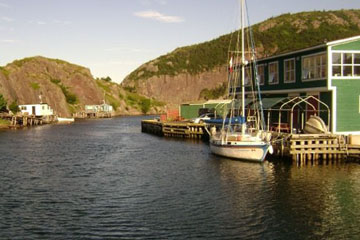Quidi Vidi Lake / Photo: Matthew McCarthy
Whale sightings
From May to October, the waters of Newfoundland and Labrador teem with the largest population of Humpback whales in the world as they migrate from the Caribbean, feeding on capelin and krill. The Humpback is a baleen whale, meaning they have a thick layer of bristles inside their mouth used to catch food.
Photo: Matthew McCarthy
While Minke, Pilot, Sperm, and even Blue whales are found around Newfoundland, the Humpbacks put on the best show.
Weighing 45 tons, they’re playful and unable to resist a good audience. The giant mammal will often emerge at the sound of an approaching boat, breaching with an impact like a meteor and slapping its tail on the surface.
Other times it’ll flip its tail up like an obscene gesture, indicating it’s diving deeper, and may stay hidden for a while.
You might also see mothers and calves swimming side by side or frolicking in the open sea.
